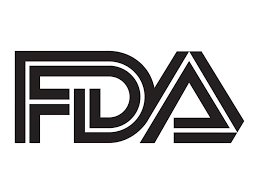Article
Janssen's First Cell Therapy Approved by FDA for Patients with Multiple Myeloma
Author(s):
Clinical results show that 98% of patients with relapsed or refractory multiple myeloma responded to cilta-cel after a single treatment.

With support from promising clinical trial results, Janssen's ciltacabtagene autoleucel (cilta-cel; Carvykti) has been approved by the US Food and Drug Administration (FDA) for the treatment of patients with relapsed or refractory multiple myeloma (RRMM) after 4 or more prior lines of therapy, including a proateasome inhibitor, an immunomodulatory agent, and an anti-CD38 monoclonal antibody.
Cilta-cel is Janssen's first cell therapy. The chimeric antigen receptor T-cell (CAR-T) therapy features 2 B-cell maturation antigen (BCMA)-targeting single domain antibodies.
The CARTITUDE-1 study examined patients with RRMM who had previously received between 3-18 prior treatment regimens (median of 6), and had previously received a proateasome inhibitor, an immunomodulatory agent, and an anti-CD38 monoclonal antibody.
"The responses in the CARTITUDE-1 study showed durability over time and resulted in the majority of heavily pretreated patients achieving deep responses after 18-month follow-up," Sundar Jagannath, MD, Director of the Center of Excellence for Multiple Myeloma and Professor of Medicine, Hematology and Medical Oncology,The Tisch Cancer Institute at the Icahn School of Medicine at Mount Sinai, and principal study investigator said in a statement. "The approval of cilta-cel provides physicians an immunotherapy treatment option that offers patients an opportunity to be free from anti-myeloma therapies for a period of time."
The results showed deep and durable responses in 98% of patients after a one-time treatment with cilta-cel. Of those patients, 78% (76) experienced a stringent complete response (sCR), meaning that a physician was unable to observe and signs or symptoms of disease through tests or imaging post-treatment.
The median duration of response(DOR) was 21.8 months at a median of 18 months follow-up. The treatment is only available through a restricted program under a Risk Evaluation and Mitigation Strategy (REMS) identified as the Carvykti REMS Program.
Cilta-cel's safety information includes a boxed warning regarding a number of syndromes. The most common adverse events consist of pyrexia, CRS, hypogammaglobulinemia, hypotension, musculoskeletal pain, fatigue, infections-pathogens unspecified, cough, chills, diarrhea, nausea, encephalopathy, decreased appetite, upper respiratory tract infection, headache, tachycardia, dizziness, dyspnea, edema, viral infections, caogulopathy, constipation, and vomitng.





